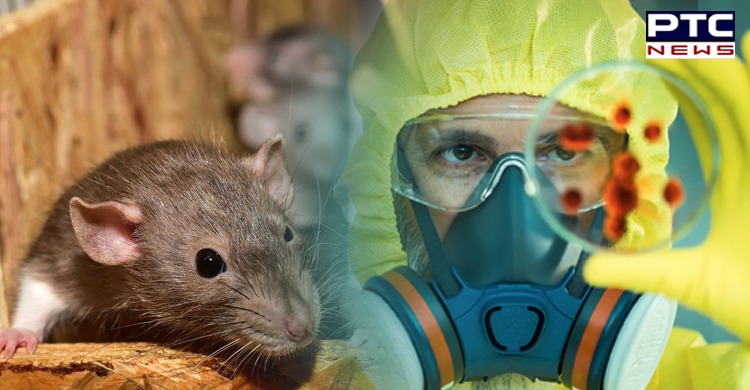
Human-to-human transmission of 'Chapare virus' confirmed
After the Covid-19 pandemic, the United States' Centers for Disease Control and Prevention (CDC) declared on Monday that the 'Chapare virus', which causes hemorrhagic fever like Ebola, can be communicated through human-to-human transmission.
 When nations over the globe are attempting to contain the Covid-19 pandemic, the United States' Centers for Disease Control and Prevention (CDC) has declared that a dreadful infection, which causes hemorrhagic fever like Ebola, can now additionally be communicated in the form of human-to-human transmission.
Also Read | COVID-19 can spread through aerosols, acknowledges US' CDC
When nations over the globe are attempting to contain the Covid-19 pandemic, the United States' Centers for Disease Control and Prevention (CDC) has declared that a dreadful infection, which causes hemorrhagic fever like Ebola, can now additionally be communicated in the form of human-to-human transmission.
Also Read | COVID-19 can spread through aerosols, acknowledges US' CDC
 Here's all you need to know about the Chapare virus:
1. The Chapare infection was first found in 2004 in the Bolivian territory of Chapare, from where it gets its name. Even though it vanished in 2004, an episode a year ago was seen in five individuals.
Also Read | Confirmed! This country announces ban on petrol and diesel vehicle to curb pollution
2. A few side effects of Chapare are fever, stomach torment, retching, draining gums, skin rash, and torment. Even though the infection can be communicated through organic liquids and even kill tainted individuals, science times announced that no dynamic cases have been recorded for the current year.
Here's all you need to know about the Chapare virus:
1. The Chapare infection was first found in 2004 in the Bolivian territory of Chapare, from where it gets its name. Even though it vanished in 2004, an episode a year ago was seen in five individuals.
Also Read | Confirmed! This country announces ban on petrol and diesel vehicle to curb pollution
2. A few side effects of Chapare are fever, stomach torment, retching, draining gums, skin rash, and torment. Even though the infection can be communicated through organic liquids and even kill tainted individuals, science times announced that no dynamic cases have been recorded for the current year.
 3. In the 2019 episode, three out of the five individuals tainted were wellbeing laborers of whom two passed on further.
4. The main indication of a year ago's episode was found in the example of organic liquids at first accepted by specialists to be dengue. Further tests, notwithstanding, didn't give any indications of dengue. In this way, tests were directed for two others.
3. In the 2019 episode, three out of the five individuals tainted were wellbeing laborers of whom two passed on further.
4. The main indication of a year ago's episode was found in the example of organic liquids at first accepted by specialists to be dengue. Further tests, notwithstanding, didn't give any indications of dengue. In this way, tests were directed for two others.
 5. The infection was at last distinguished as the Chapare after the Pan-American Health Organization (PAHO), which was in association with CDC, gave it an example. CDC additionally built up an RT-PCR test to analyze the infection later on.
5. The infection was at last distinguished as the Chapare after the Pan-American Health Organization (PAHO), which was in association with CDC, gave it an example. CDC additionally built up an RT-PCR test to analyze the infection later on.
 6. It was this flare-up that demonstrated the infection could spread from individual-to-individual. Moreover, specialists state the infection is available in the semen of a survivor for a span of 24 weeks or 168 days subsequent to getting tainted.
7. Chapare infection was likewise recognized in rodents around the home of the main infected individual. Specialists however noticed this doesn't demonstrate that rodents were the primary source of the outbreak.
-PTC News
6. It was this flare-up that demonstrated the infection could spread from individual-to-individual. Moreover, specialists state the infection is available in the semen of a survivor for a span of 24 weeks or 168 days subsequent to getting tainted.
7. Chapare infection was likewise recognized in rodents around the home of the main infected individual. Specialists however noticed this doesn't demonstrate that rodents were the primary source of the outbreak.
-PTC News
